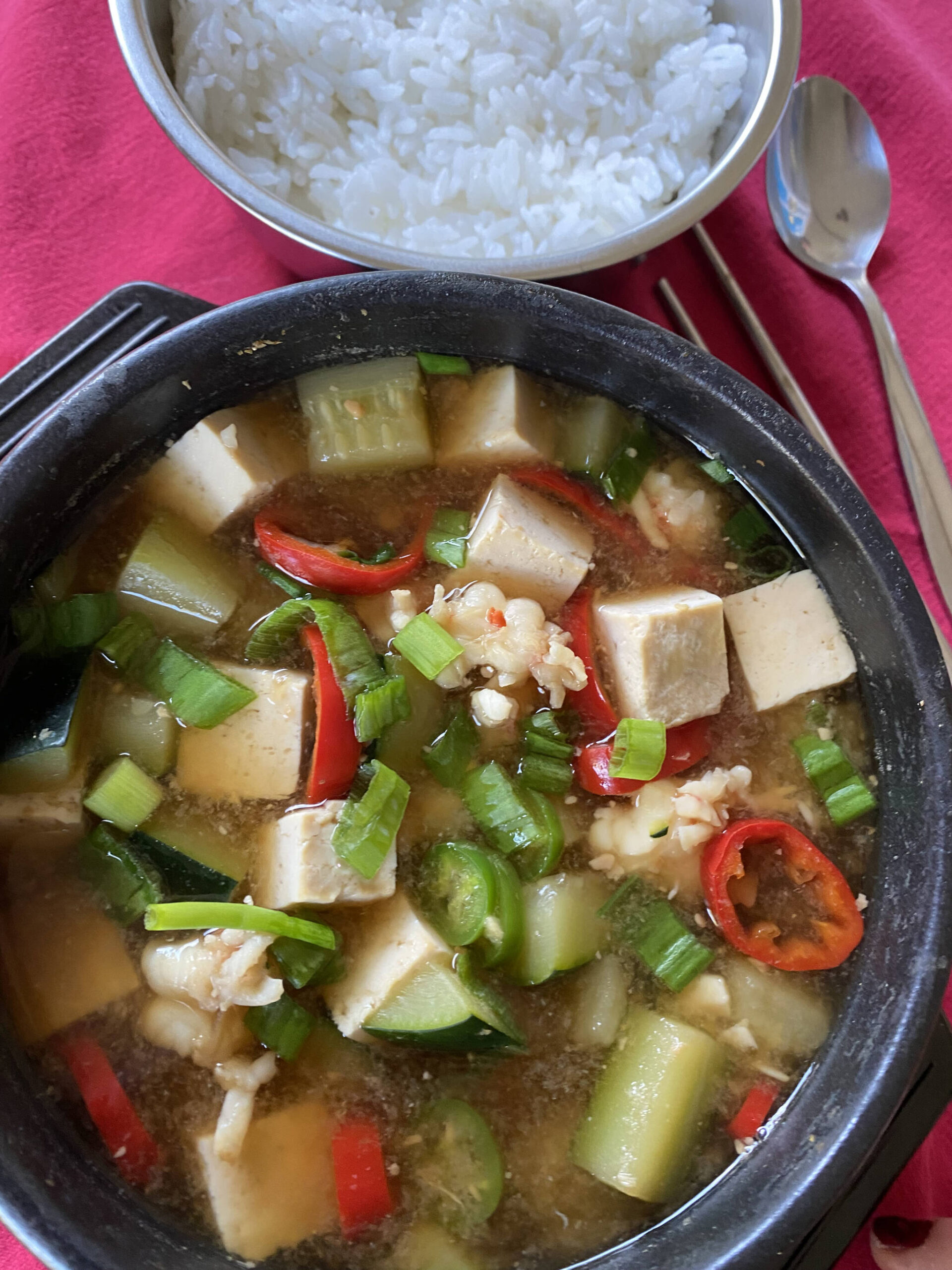Monday, Sept. 16 is the first day of the traditional three-day Korean harvest festival, Chuseok. This holiday comes on the 15th day of the eighth month on the lunar calendar, beginning on the full moon, around the fall equinox.
This is probably the biggest of the traditional Korean holidays and the train stations and highways will be packed with travelers returning to their “hometowns” (often the countryside hometowns of their parents or grandparents) to pay respects to their ancestors. This practice, called charye, involves gathering and preparing freshly harvested foods and displaying them on an elaborate banquet table as an offering to the ancestors who are traditionally thought to provide protection for their descendants.
It is common for people to dress in traditional clothing, called hanbok, and to play traditional games to bond with their extended family over the holiday.
The most iconic of the traditional foods for this holiday are the sweet rice cakes, songpyeon, made with fillings like crushed sesame seeds, pine nuts, jujubes, chestnuts, black beans, cinnamon and honey. These treats are steamed on a bed of pine needles to enhance their flavor and aroma and are made in an array of colors like green, yellow, plain white and pink.
The shape is symbolic of the moon. First the unfilled circle of rice dough resembles the full moon of the equinox, then, once filled and folded, the dumpling resembles a half-moon, which represents good fortune and success. Making them is time consuming and requires specialty ingredients and I have never made them successfully… which is a shame because I really do love them.
Chuseok isn’t a national holiday here so our celebration dinner will have to be a meal I can prepare in less than an hour. I’ve mentioned this stew in this column before but haven’t offered the recipe until now because the main ingredient, fermented soybean paste, is not available on the peninsula. However, it is easily purchased online and holds up well during shipping (I ordered it a few times during COVID when a shopping trip to the Korean markets in Anchorage was out of the question,) so I’m providing this recipe with time enough for delivery.
This stew is not considered holiday food, but it is an everyday food with immense cultural significance, so I believe it is an excellent way to celebrate Korean culture on this special day. The salty stew is earthy and refreshing and was the single dish that sparked my obsession with Korean food.
Doenjang JJigae
Ingredients for 2 servings:
1 large golden potato
1 medium zucchini
2/3 block of firm tofu
½ white onion
8 shrimp, peeled and deveined
¼ cup doenjang (Korean fermented soybean paste)
2 teaspoon fish sauce
4 large cloves garlic, minced
2 stalks green onion
Directions:
Dice the onion, potatoes, zucchini, shrimp and tofu into equally sized pieces. About the size of dice.
Place the potatoes, garlic, and onion in a pot and cover with water. Bring to a boil.
Stir in the bean paste and continue to boil until the paste has dissolved.
Add in the zucchini and tofu and boil for another 5 minutes.
Drop in the shrimp and boil another 5 minutes until the shrimp is cooked.
Turn off the heat and stir in the fish sauce and chopped green onion.
Serve steaming hot with rice and kimchi.
***This is the non-spicy version. If you want a little kick (and I always do) you can add a chopped jalapeno when you drop in the shrimp, and you can add some Korean hot pepper powder at any stage for even more heat. I used a whole chopped jalapeno in my bowl and a small red pepper for some color.***

